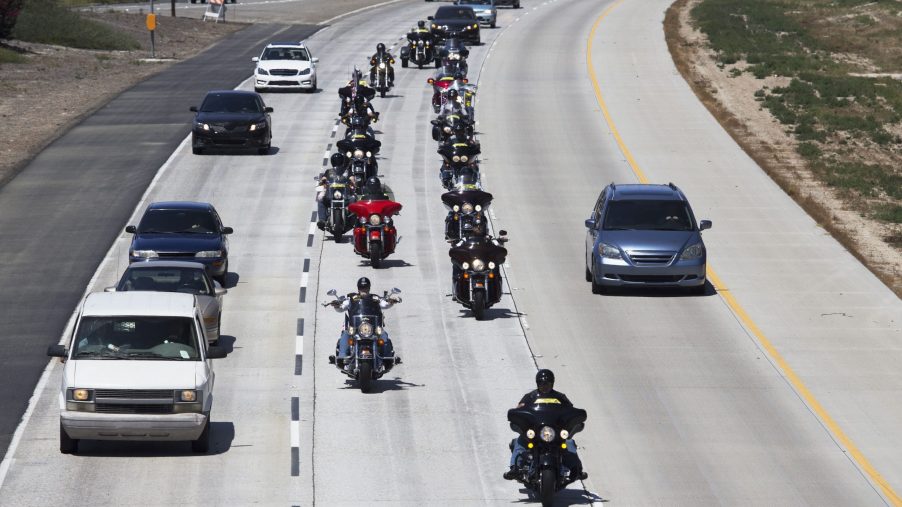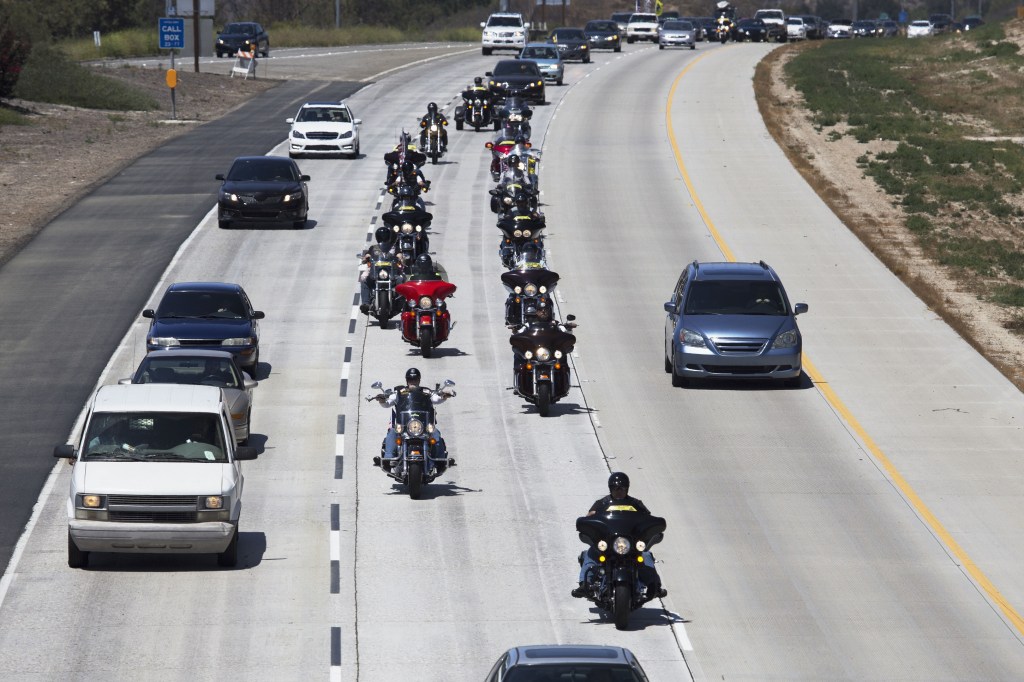
Motorcycle Riders Literally See the Road Differently Than Drivers
Motorcycle rider safety study article highlights:
- A Bournemouth University study found that car drivers don’t scan or perceive road threats like motorcycle riders
- Failing to consciously keep track of motorcycle riders often stems from how our brains process information
- While there are ways for riders to draw attention to themselves, drivers have their own share of road safety responsibilities
Whether your two-wheeled ride has a motor or not, it’s almost inevitable that at some point, a car will cut you off. And unfortunately, that can sometimes be fatal for motorcycle riders and cyclists. Wearing and maintaining proper safety gear certainly helps, but it only does so much. However, considering how much safety tech the average car carries these days, why does this keep happening? Well, according to a recent study, that’s likely because drivers and motorcycle riders see the road very differently.
A new UK study shows drivers don’t pay attention to smaller things like motorcycle riders do

Even at the best of times, the open road presents a lot of hazards for motorcycle riders that armored airbag jackets can’t withstand. But the first step in mitigating danger is identifying it. And a new study from England’s Bournemouth University found that drivers seemingly ignore some of the risks riders notice.
Ph.D. researcher Shel Silva—a rider herself—organized the study to determine how people process visual road information, RideApart explains. This involved gathering eye-tracking data and interviewing riders and drivers after collisions. And the results were interesting, to say the least.
On the plus side, both car drivers and motorcycle riders identified large objects, such as semi-trucks, as potential threats. Yet while riders pegged cars as potential threats, drivers failed to do the same with bikes. Furthermore, drivers often failed to pay attention to motorcycles, period.
This is a significant problem for riders, given that simple physics dictates that when a car meets a bike, the car wins. And it’s not like loud pipes have any effect. But the problem isn’t necessarily a visual one, or rather, not just a visual one. It’s also a mental one.
Assume they don’t see you; ride like you’re invisible; it’s a constant refrain in Motorcycle Safety Foundation classrooms. And if the Bournemouth University study is anything to go by, it seems like car drivers genuinely don’t see motorcycle riders. Part of that stems from vehicle blind spots—as well as trucks and SUVs—getting bigger every year. But it also stems from flaws in how brains process information.
How drivers’ brains can prevent them from seeing motorcycle riders
Firstly, human brains are programmed to recognize certain things as potential threats. Big objects, especially big fast-moving objects, are one of them. But a motorcycle is smaller in comparison to a car, so our brain prioritizes the car to avoid overtaxing itself. It’s called ‘selective attention,’ and while it works well in nature, it’s dangerous in modern society. Moreover, because bikes are smaller, it’s harder for our brains to accurately judge their speed.
Secondly, there’s masking, which has nothing to do with COVID-19 precautions. Masking refers to the brain’s ability to ‘edit out’ what it thinks is unnecessary visual information, Motorcyclist explains. For example, saccadic masking eliminates the vision blur that accompanies your eyes’ jerky motions, or ‘saccades.’ Your brain also masks the visual disruption that occurs whenever you blink. Neither is an issue at a running pace, but it’s a different story at road speeds. Saccadic masking might make you miss vital information, like a motorcycle rider coming up on the left.
Saccadic masking is also linked to another brain-related motorcycle rider safety issue: inattentive blindness. Remember that earlier bit about how the brain prioritizes information to avoid overworking itself? Well, if a motorcycle appears during a saccade that gets edited out, our brain labels that bike as unimportant. Therefore, even if your eyes see the bike, your mind won’t consciously inform you that it’s there.
In addition, our peripheral vision doesn’t actually pass on a lot of information. Instead, our brain fills in the relatively small field of vision with things it knows historically are in the vicinity. So, if something new, say, a motorcycle rider, enters your peripheral vision, your brain might not perceive or process it.
In short, when a driver says they didn’t see the motorcycle rider, it’s not necessarily because their vision is poor. It’s because evolution trained our brains to take shortcuts.
Road safety requires drivers and riders to do their parts
So, what does that mean for motorcycle riders’ safety? For one, Silva recommends that riders make “minor lane adjustments” before turning or performing other maneuvers, RideApart says. Theoretically, this draws attention to the bike, forcing the driver’s brain to prioritize it.
Wearing bright colors and/or reflective gear helps, too. So does keeping track of a vehicle’s blind spots and staying out of them. Plus, advanced safety tech like blind-spot monitoring is starting to trickle into the motorcycle world.
However, road safety isn’t a one-way street or a one-person show. Car drivers are responsible for operating their vehicles in a way that keeps others safe. And that means keeping several things in mind.
Firstly, recognize that motorcycles do not handle, accelerate, or move like cars. Depending on where you live, this might mean understanding how lane-filtering and lane-splitting work. I highly recommend taking an MSF course, even if you don’t own a motorcycle, purely to understand the rider mindset.
Secondly, even if your car has blind-spot monitoring, know that it’s not a replacement for paying attention. As the IIHS recently demonstrated, ADAS technology is far from perfect. And it’s meant to assist, not replace the driver.
Thirdly, keep your brain’s ‘shortcuts’ in mind whenever you drive. Don’t scan the road in big chunks, you might miss something. Double-check your blind spots before changing lanes or turning. And force yourself to pay attention to smaller objects.
After all, we’re all on the same road.
Follow more updates from MotorBiscuit on our Facebook page.


